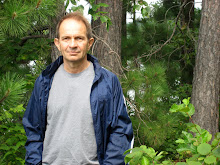
That's my foot hanging out the open door of an old Russian helicopter sputtering its way above my resort in north-east Cuba en route to a trip over the Sierra Maestre mountains to Santiago. I was strapped by a simple waist-only-seatbelt into what seemed to be a car seat bolted to the wall. Thought I'd start with this to grab some attention. Cheesy, I know, but hey.
Anyway, I'm back from Argentina and my new novel BORDERLINE is coming out March 9. It's had great pre-publication reviews including stars in Publishers Weekly and School Library Journal, and a full cover profile in the current Quill and Quire. I'm told I should share some quotes, and maybe I will, but being Canadian makes that part of a blog seem, well, you know, eh?
So for now, here's a post about fifteen things I'll never forget. If any of them strike your fancy let me know and I'll write a bit more about it. Okay?
FIFTEEN THINGS I’LL NEVER FORGET
Encountering a shark while snorkeling off Cayo Largo
Wandering alone through the Red Pyramid, in the desert south of Saqqara, Egypt
White-water rafting in the Canadian Rockies
Taking a balloon ride with my eighty-year-old mom over Cappadocia, Turkey


Waking up to find an elephant beside my tent in the bush in Botswana
Volunteering at a Baptist soup kitchen while living in Manhattan
Undergoing a santerían purification ritual in rural Cuba
Staying overnight in a one-room mud home in the village of Ulongwe, Malawi

Sleeping between train cars while traveling by rail through the former Yugoslavia during the Cold War
Shaking hands with Pope Paul VI, age eighteen, at an audience in Vatican City
Meditating in Buddhist temples around Bangkok, Thailand
With the imam’s permission, climbing the minaret of the Mosque of Qaitbey in Cairo’s City of the Dead
Skiing opposite the Matterhorn
Hiking along the Great Wall of China

Eating a mopani worm in Zimbabwe
********
So... anything you'd like to hear more about? Or shall I bore you with BORDERLINE stuff? :)
Cheers,
Me




























 alt=""id="BLOGGER_PHOTO_ID_5424593412873579458" />
alt=""id="BLOGGER_PHOTO_ID_5424593412873579458" />




















